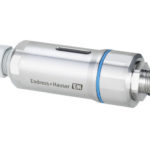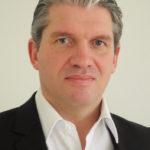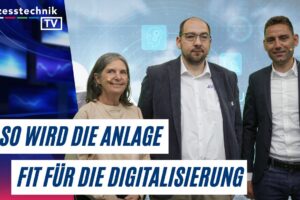Data is the foundation of Industry 4.0. Connectivity is one of the basic prerequisites for making it available. The challenge facing plant operators in Germany is that most of them have been operating their systems for years or even decades. As a result, they find themselves stuck in brownfield environments. This is also why Namur developed the so-called “NOA – Namur Open Architecture” and adopted the corresponding NE 175 Namur recommendation. The basic idea of the “Namur Open Architecture” is as simple as it is captivating: the transmission of additional digital data from the field level is carried out in parallel to the transmission of the measurement values across a second communications channel. This approach minimises the amount of additional data traffic and the impact on existing system architectures.
NOA as bridge technology
NOA serves as an important bridge technology from the strict hierarchical structures of Industry 3.0 to the fully connected, digital Industry 4.0 environments. Implementing parallel data transmission as an extension makes it ideal for existing systems. Today, 97 % of data from field instruments is not utilised. Existing systems thus contain a huge amount of potential that could be tapped into through digitalisation. It also offers users an opportunity for permanent asset monitoring since instruments can be clearly identified and the configuration parameters and correct layout reflected in the “digital twin.” Thanks to state-of-the-art diagnostic functions, the health condition of smart sensors can be permanently monitored.
The second channel NOA concept provides service and maintenance personnel direct access to condition monitoring while reducing the volume of data in the core processes. Digitalisation furthermore enables comprehensive asset management and process optimisation through the additional analysis of monitoring data. To realise the NOA concept in practice – for both new (greenfield) and existing (brownfield) plants – Endress+Hauser now offers a clever and simple solution with the Fieldport SWA50.
Wireless adapter transmits HART signals
90 % of Endress+Hauser field instruments already feature a digital interface, including fieldbuses such as Profibus or Foundation Fieldbus, in addition to HART, the most common technology. In practice though, the HART signal is not utilised in most environments. With the Fieldport SWA50 wireless adapter, all HART signals can be transmitted parallel to the measurement values, including those from third-party manufacturers. The Fieldport SWA50 is intrinsically safe (Ex ia), loop powered and can be easily retrofitted to work with HART instruments from any manufacturer.
The HART signals can then be transmitted to the cloud via WirelessHART or Bluetooth. If Bluetooth is used, transmission is carried out via the Fieldedge SGC200 direct into the Endress+Hauser Netilion cloud. This provides users access to the entire range of Netilion services such as Netilion Analytics, Netilion Health and Netilion Value, which enable features such as condition monitoring and the remote display of measurement values. And with the Smartblue app, users can remotely configure the field instrument parameters. In another step, the data can also be transmitted to customer-specific clouds or ERP solutions via an application programming interface (Netilion Connect). With WirelessHART, connectivity occurs via the Endress+Hauser Fieldgate SWG70 and the Fieldedge SGC500.
Endress+Hauser GmbH + Co. KG, Weil am Rhein, Germany











